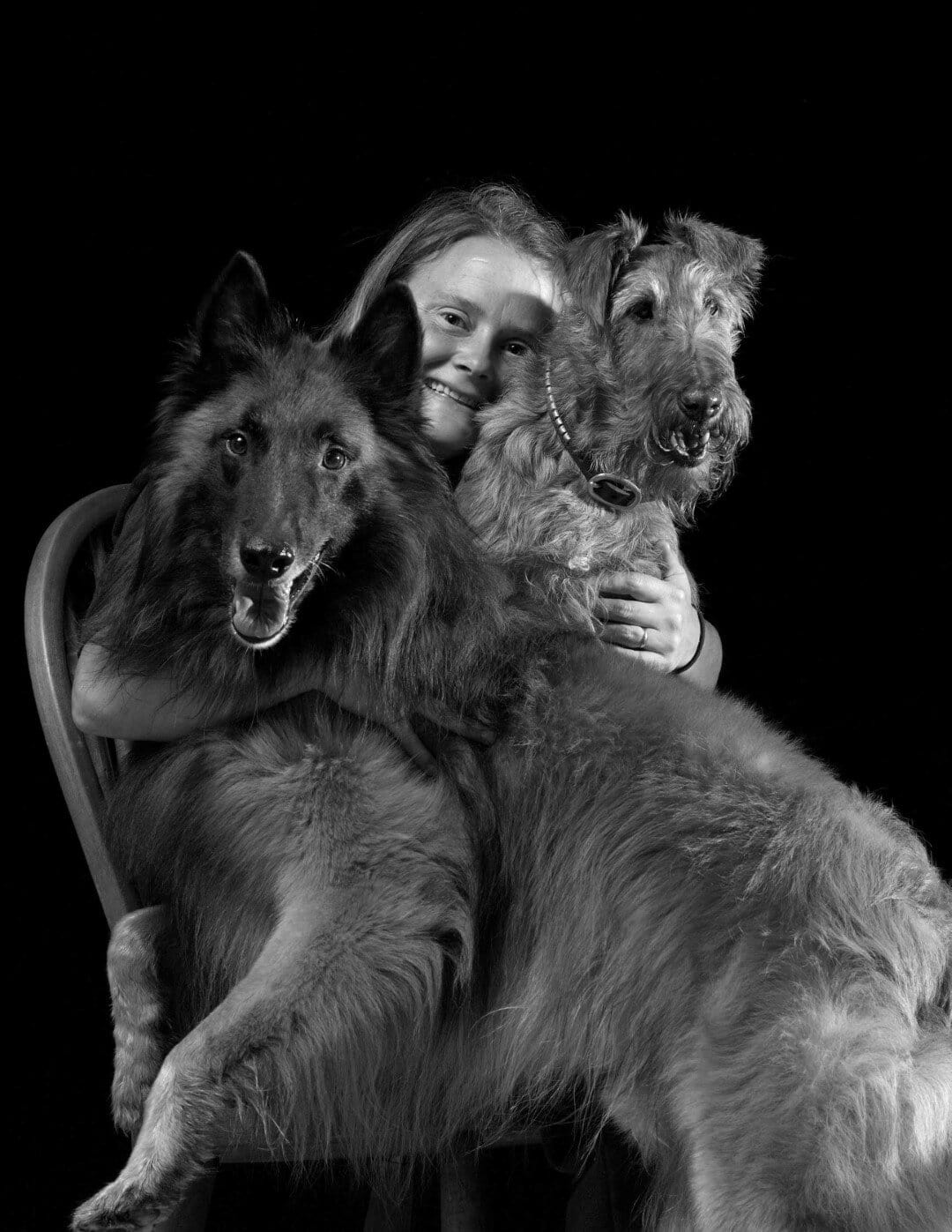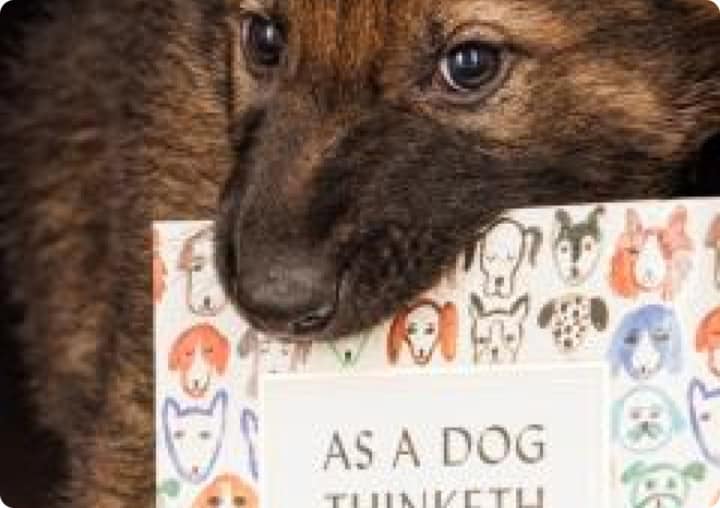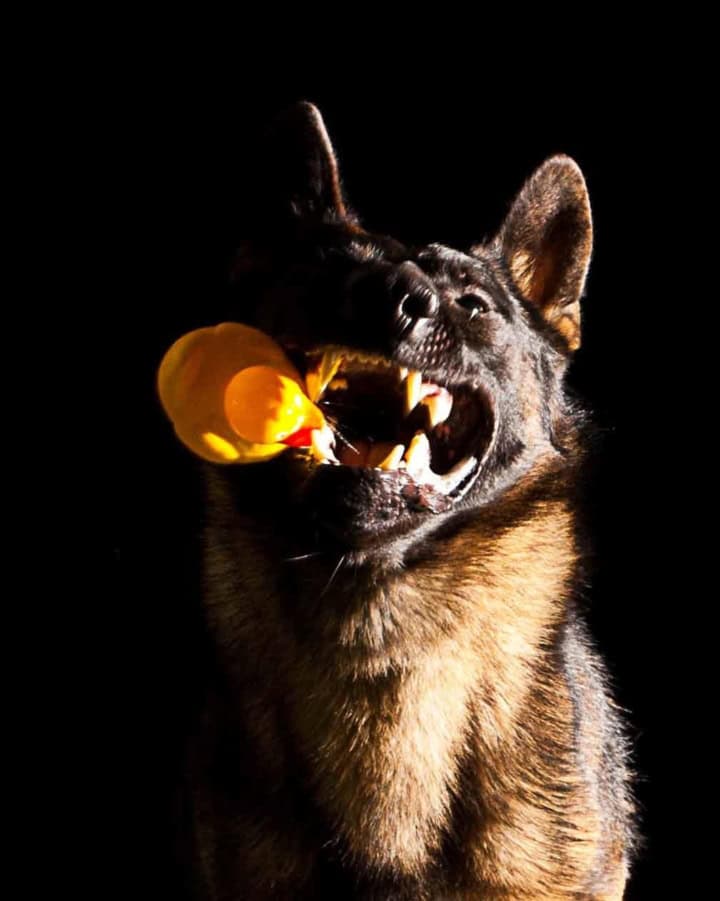Learning the art of Dog Training can be likened to learning to speak a language. For those that can do it fluently, it is not a thought process; it is just something that you do. And when you are asked to define it, it can be rather a struggle trying to define the concept of feel and timing. Many dog trainers intrinsically know, but are not cognitively aware.
As any parent knows, no two children are alike. You cannot parent them the same, talk to them the same, reward them the same, or even have the same expectations for them. While you might need to be very serious and focused with one child, with another you might need to loosen them up and get them smiling. What you did to raise your first perfect child that never got into trouble might be a disastrous combination of failure for your second. You can’t raise two kids the same, and neither can you train two dogs the same.
In other words, there are no absolute rules, and it is a skill of feel and timing. Dog Training is a profession of reading owners, reading the dogs, and giving the solution for that person, for that dog, for that day. Once the dog has learned this lesson, it could no longer be relevant, but could also prevent the dog’s continued learning.
Training a dog is like peeling layers of an onion. What you desperately need on week one might be totally wrong in week two, because you are now dealing with a different layer. Once the lesson is learned, the dog changes. Now your new layer is presented, and must be worked with. Anything I say that I will never, ever do my next client walks in my doors and my Never-Solution is the perfect solution for this moment in time, even though it would have not been right for any of my client’s dogs in the past two years.
How can a newbie be expected to learn a training method with no rules? There are recipes to follow, but the execution of every recipe needs to be adjusted for every single team that come to you for help. We are working with complex personalities and finding a way to motivate each one of them to give us their heart, soul, and 100% effort regardless of emotions or distractions. The execution of the simple method can become complex depending upon prior history of the dog, prior history of the owner, breed of the dog, and relationship of the dog with his owner. Dog Trainers become masters at reading dogs and people.
Pet Manners and basic obedience are the simplest class to teach out of all the ones that I offer. While I am indeed following a curriculum, I am training the dogs and the people. I am looking at temperament and personality, and combining them with genetics, to meet the individual needs of each dog. What is perfectly right for one dog in class could be devastating for another. This might be marking a moment in time with praise, feeding a cookie, or giving guidance, rules, or even telling them “No”. Each dog needs to get to the same place, but like me and my siblings, will get there in their own unique way. What works for dog A might be completely wrong for dog B.
Any of you who have had multiple dogs know exactly what I am talking about. Your first dog was an angel and easy, and you felt good about your dog-training abilities. Your second was even better. Then you got your third, did all of the same stuff, and you have a neurotic nutcase on your hands. Why? It is because you taught what you had previously taught, but didn’t pay attention to what your dog was telling you?
I think the thing that irritates me is when dog-trainers say that all breeds learn the same. While perhaps they learn the same, for each dog you have to meet their learning needs first so that they are able to hear your lesson.
A fearful little Labrador trying to cower at the back of class is not going to learn the same as the Labrador trying to eat through my pockets. The first is too scared to be able to process my request. The second hasn’t even heard me talk because his brain is processing how to get the cookie out of my pocket. Each dog has unique learning needs that must be addressed for the lesson to be able to be learned.
In this profession of no recipes and absolutes, successful trainers instead become masters of feel and timing. Training a dog, child, horse, or even spouse, is all about feel and timing. Sometimes I wonder if this concept can be taught? Can you be taught to pay apt attention and learn what a certain look means? Or learn what a certain response means? And then can you process this quickly enough to know the right solution when you are presented with this?
I know in my own relationships when I can push my friend’s and husband in their lives and give them an encouraging boot, or even a telling off, but I also know when I need to give them a hug and tell them it is okay to have a crap day. Our dogs are the same. Are you as a handler able to read when you can push your dog and demand for more effort, or to back off and reward for a teenie bit less?
Once you have developed your awareness of where your dog is at mentally, you then have new challenges to learn. Do you know which solutions to the scenarios below to pick, in a set moment, with your dog?
If he is bad, should you redirect, help, be compassionate, ignore it, show disapproval, or correct him?
If he is good, should you give moderate praise, mega praise, reward, continue on working, end the session on a positive note, ask for more, or ignore their goodness?
When in a given situation, do you push for better, call it a day, or count your losses?
Should your dog be on the couch, or on the floor? Crated sometimes, or never? Does he need time alone to clear his head, or is time alone for him detrimental, because he needs time with you to soften and bond?
Ultimately good trainers are expert readers of dogs, and their owners. They have exceptional feel and timing, and just by looking at a dog, know what he is capable of (both good and bad) and who he is as a dog. You have a toolbox full of 20 potential solutions for every problem, and know which ones to use and when. And more than anything else, you know how to build a relationship with all dogs, so that they are respectful of you, and motivated to work for you. This takes time, experience, and an open mind to learn, and makes the journey of becoming a dog-trainer a life-time quest.
Once you have learned it all, it is time for a new profession. If as a Dog Trainer you have all the answers it is because you are not aware of how little you know and you think the task is simple.
Maturity in this profession makes you humble and realize how little you know.
Happy Training Everyone,
Monique Anstee


